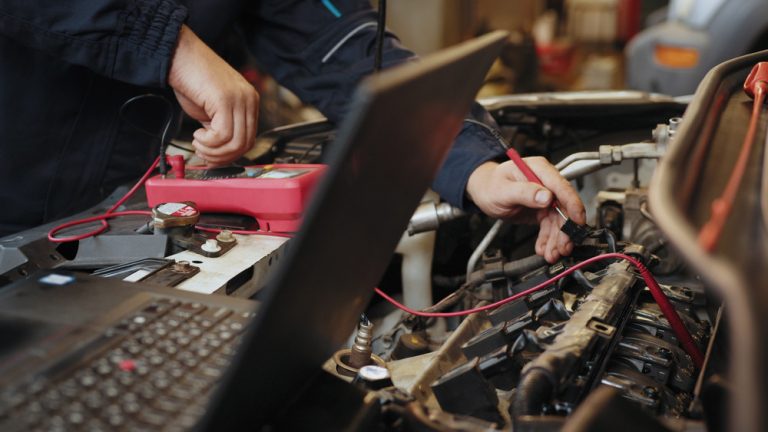

Introduction
Car brakes are perhaps the most critical safety feature in any vehicle, playing a pivotal role in ensuring driver and passenger safety. Understanding how car brakes work is essential for every driver, as it empowers them to make informed decisions regarding maintenance, upgrades, and safe driving practices. In this comprehensive guide, we’ll delve into the workings of car brakes, from their fundamental principles to the latest advancements in braking technology.
The Basics of Braking
At its core, the braking system of a car functions by converting the kinetic energy of the moving vehicle into heat energy, ultimately bringing the car to a stop. This process relies on the principle of friction, where the brakes apply pressure to slow down or halt the rotation of the wheels.
As the wheels decelerate, the vehicle gradually comes to a stop, preventing accidents and ensuring control over the vehicle’s motion.
Types of Brake Systems
Modern vehicles employ various brake systems, each with its unique features and advantages. Anti-lock braking systems (ABS) prevent wheel lock-up during sudden stops, enhancing vehicle control on slippery surfaces. Electronic brake-force distribution (EBD) adjusts brake force to each wheel based on factors like load and road conditions, optimizing braking performance. Regenerative braking systems convert kinetic energy into electric energy, improving fuel efficiency in hybrid and electric vehicles.
Evolution of Braking Systems
The history of car brakes is marked by continuous innovation and refinement. Early braking systems utilized rudimentary methods, such as wooden blocks pushing against the wheels, to achieve deceleration. However, these primitive systems were inefficient and often caused excessive wear on the wheels. The advent of drum brakes in the early 20th century represented a significant leap forward, introducing heat-resistant pads housed within a drum attached to the wheels. While drum brakes offered improved braking performance, they were susceptible to overheating under intense braking conditions.
Hydraulic Brakes: A Revolutionary Breakthrough
The introduction of hydraulic brakes revolutionized the automotive industry, offering superior reliability and performance compared to mechanical braking systems. Hydraulic brakes utilize pressurized fluid to transmit braking force evenly to all four wheels, ensuring consistent and responsive braking performance. Unlike mechanical brake systems that rely on cables and pulleys, hydraulic brakes require minimal maintenance and provide enhanced safety and control for drivers.
Transition to Disc Brakes
In recent decades, disc brakes have emerged as the preferred braking system in modern vehicles, thanks to their superior performance and cooling capabilities. Disc brakes feature a rotor attached to each wheel and a caliper that houses brake pads. When the brake pedal is depressed, the caliper squeezes the brake pads against the rotor, generating friction and slowing down the wheel’s rotation. Disc brakes offer several advantages over drum brakes, including better heat dissipation and increased surface area for friction, resulting in improved braking efficiency and reduced risk of brake fade.
Materials and Technologies
The effectiveness of car brakes relies heavily on the materials used in brake pads and rotors. Modern brake pads are typically composed of semi-metallic materials or synthetic compounds blended with metal flakes to provide optimal friction and durability. Race-grade brake pads are specifically engineered to withstand extreme temperatures and high-performance driving conditions, offering superior stopping power and consistency on the track. Additionally, advancements in brake technology have led to the development of innovative features such as anti-lock braking systems (ABS) and electronic brake-force distribution (EBD), further enhancing safety and stability on the road.
Maintenance and Upgrades
Regular maintenance is crucial for ensuring the longevity and performance of car brakes. Drivers should adhere to manufacturer-recommended service intervals and promptly address any signs of brake wear or malfunction, such as squealing noises or reduced braking efficiency. When it comes time for replacement, opting for new brakes with high-quality materials and advanced features can enhance safety and driving comfort. Upgrading to performance-oriented brake pads or rotors may also provide improved stopping power and durability, particularly for drivers who engage in spirited driving or towing activities.
Common Brake Problems and Solutions
Brake systems can experience various issues requiring attention. Brake fade, caused by overheating, reduces braking effectiveness and requires cooling or upgrading brake components. Grinding noises indicate worn brake pads or damaged rotors, necessitating replacement. Brake fluid leaks can lead to brake failure and require inspection and repair of brake lines or seals. Addressing these issues promptly through proper diagnosis and repair ensures continued brake performance and vehicle safety. Regular inspections and maintenance help prevent common brake problems and ensure reliable braking performance.
Conclusion
In conclusion, understanding how car brakes work is essential for every driver, as it empowers them to make informed decisions regarding maintenance, upgrades, and safe driving practices. From the basic principles of friction to the latest advancements in braking technology, car brakes play a crucial role in ensuring vehicle safety and control. By staying informed and proactive about brake maintenance and upgrades, drivers can enjoy enhanced safety, performance, and peace of mind on the road.
.





